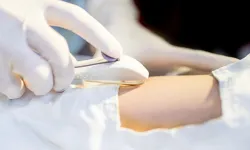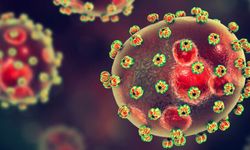A gene therapy trial in the US on a congenitally blind boy has provided hope for millions of people with significant improvements in their vision.
The Associated Press reported the story of Antonio Vento Carvajal, a 14-year-old boy in Miami with congenital blindness, who regained his sight after months of gene therapy using eye drops.
Dr. Alfonso Sabater's gene therapy method, which restored Carvajal's sight, raised the question of whether the same method could be applied to those born blind due to genetic problems around the world.
Born with "dystrophic epidermolysis bullosa", a rare genetic disease that causes blisters all over his body and in his eyes, Carvajal's skin improved dramatically when he participated in a clinical trial to test the world's first topical gene therapy.
This reinforced Dr. Sabater's belief that a new gene therapy could pave the way for the visually impaired teenager to see better.
This insight not only helped Antonio, but also opened the door to similar therapies that could potentially treat millions of people with other eye diseases, including common ones.
Yunielkys Carvajal, Antonio's mother, could not hold back tears as she described her joy at her son's regained sight and said of Dr. Sabater, Director of the University of Miami's Bascom Palmer Eye Institute, "He has always been there for us, he is not only a good doctor, but a very good person and he has always given us hope. He never gave up," she said, expressing her gratitude.
The Cuban family came to the US in 2012 with a special visa for the treatment of Antonio's genetic disease, which affects about 3,000 people worldwide.
After undergoing a series of surgeries to remove scar tissue from his eyes, Antonio's vision initially worsened rather than improving.
"I tried to reassure him that I was working on the problem, that I would definitely find a solution, but that I needed time to do so, and his trust in me gave me extra energy to keep working," Dr. Sabater said, summarizing the difficult and anxious process they went through with their patient.
Knowing that Antonio was using an experimental gene therapy gel to treat his skin lesions, Dr. Sabater contacted drug manufacturer Krystal Biotech to see if it could be reformulated for the boy's eyes.
Suma Krishnan, co-founder and head of research and development at Pittsburgh-based Krystal Biotech, thought the suggestion made sense and gave the project the green light, thinking "it couldn't hurt to try."
Scientists had previously discovered that Antonio's genetic disease was the result of a mutation in a gene that helps produce a protein called "collagen 7" that holds both the skin and corneas together.
Krystal Biotech and Dr. Sabater decided to use an inactivated "herpes simplex virus" to deliver intact copies of the gene into the body with a treatment called Vyjuvek, and to use a new eye drop with adaptations for the necessary gene therapy.
After two years, including testing the drug in mice, the team received approval for use from the US Food and Drug Administration and permission from university and hospital review boards to test the drug on patients.
Last August, Antonio underwent surgery on his right eye, after which Sabater started giving him the eye drops.
Dr. Sabater said that Antonio's eye has improved since the surgery and that there has been a significant improvement every month and that the vision in his patient's right eye has become near perfect.
This year Sabater began treating Antonio's left eye, which has even more scar tissue. Sabater reports that his patient has already achieved what he calls "a pretty good level" of vision, close to 20 out of 50, which he expects to improve in the future.
Sabater, director of the Eye Institute, believes that the eye drops used for gene therapy could potentially be used for other diseases by altering the gene transmitted through the virus.
Dr. Sabater said a gene could also be used to treat Fuchs' dystrophy, which affects 18 million people in the US and accounts for about half of corneal transplants in the country.















